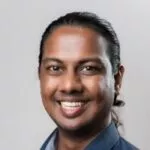Maybe you’ve already binged all the top picks from the 1950s that we recommended last week, and now you’re hungry for more classics.
Well, you’re in luck! We’ve rounded up 15 of the best movies of the 60s that you need to check out.
The 60s was a golden era for cinema, and its films are classic and iconic, with stories and styles that have stood the test of time.
So, grab your popcorn, get comfy, and let’s explore these iconic flicks that defined a decade!
1. Psycho (1960)
Psycho is a game-changer in the horror world, directed by Alfred Hitchcock. Undoubtedly, this movie flipped the script on what people thought horror could be. It’s most famous for that shocking shower scene where Janet Leigh’s character, Marion Crane, gets brutally killed.
What’s wild is that Hitchcock made it feel super intense with quick cuts and Bernard Herrmann’s screechy, dramatic music, even though you never actually see the knife hit her.
Anthony Perkins nails it as Norman Bates, who’s both creepy and weirdly sympathetic—something pretty unusual for that time.
And there’s no denying that the movie blew everyone’s minds by killing off the supposed main character early on, keeping viewers on edge the whole way through.
2. Lawrence of Arabia (1962)
Lawrence of Arabia is one of those epic films that feels massive in every way. Directed by David Lean, it tells the story of T.E. Lawrence, a British officer who played a big role in the Arab Revolt against the Ottoman Empire during World War I.
Peter O’Toole’s performance as Lawrence is legendary as it shows him as a hero and a deeply conflicted guy at the same time. The film wows with its stunning desert scenery and intense battle scenes, all shot in the dramatic landscapes of Jordan and Morocco.
It makes you feel like you’re right there on a grand, historical journey, that’s for sure. Not to mention, the music and cinematography are still considered classic, and it scooped up seven Oscars, including Best Picture.
3. The Graduate (1967)
The Graduate is one of those films that really captured the vibe of the 1960s, especially the confusion and frustration of young adults.
Dustin Hoffman plays Benjamin Braddock, a recent college grad who gets tangled up in an affair with an older woman, Mrs. Robinson, played by Anne Bancroft. And the whole situation is messy, awkward, and relatable.
The movie is also known for its killer soundtrack by Simon & Garfunkel, with songs like “Mrs. Robinson” becoming instant classics.
The ending, where Ben and Elaine (Mrs. Robinson’s daughter) run away together only to sit silently on a bus, is one of film history’s most famous and talked-about scenes.
4. 2001: A Space Odyssey (1968)
Stanley Kubrick’s 2001: A Space Odyssey is a visual and philosophical journey like no other.
Known for its groundbreaking special effects, which still impress today, the film explores themes like human evolution, artificial intelligence, and the universe’s mysteries.
Also, the mysterious monoliths that pop up at key moments are unforgettable, which spark big changes in the story.
Alongside this, the film’s minimal dialogue and classical music—especially during the space docking scenes—bring a slow, hypnotic vibe that sticks with you.
In a nutshell, the flick was a total game-changer for the sci-fi genre and influenced many other movies.
5. Dr. Strangelove (1964)
Dr. Strangelove, or How I Learned to Stop Worrying and Love the Bomb, is Stanley Kubrick’s darkly comedic take on the Cold War.
The movie pokes fun at the absurdity of nuclear war and the paranoia of the time. Peter Sellers steals the show by playing three different characters: the bumbling British officer Mandrake, the timid U.S. President, and the bonkers ex-Nazi scientist Dr. Strangelove.
What stands out is the movie’s sharp, witty dialogue and unforgettable scenes, like Major Kong’s wild ride on a nuclear bomb.
You have to give this film its props—it’s hilarious and terrifying all at once, and it still hits home today as a powerful satire of political and military madness.
6. West Side Story (1961)
West Side Story is a musical that gives Shakespeare’s Romeo and Juliet a fresh twist by setting it in 1950s New York City. Instead of the Montagues and Capulets, you’ve got rival street gangs—the Jets and the Sharks.
Directed by Robert Wise and Jerome Robbins, the movie features unforgettable songs like “Tonight,” “America,” and “Somewhere,” all thanks to Leonard Bernstein’s music and Stephen Sondheim’s lyrics.
The choreography, especially in scenes like the gym dance and the rumble, is full of energy and creativity, blending intense drama with fantastic dance moves.
On top of that, the film was a massive hit, taking home 10 Academy Awards, including Best Picture, and becoming one of the most awarded movies in Oscar history.
And we can’t forget Rita Moreno’s fiery performance as Anita, which won her an Oscar.
7. The Sound of Music (1965)
The Sound of Music is a classic musical you’ve probably heard of. Julie Andrews stars as Maria, a bubbly nun-turned-governess who brings joy and music to the lives of the seven Von Trapp kids in Austria right before World War II.
The movie features some of the most iconic songs ever, like “Do-Re-Mi,” “My Favorite Things,” and “Edelweiss,” all composed by Rodgers and Hammerstein. Filmed in gorgeous locations across Austria, with the Alps making a stunning backdrop, it’s a real treat for the eyes.
It was a huge success, winning five Academy Awards, including Best Picture, and has become one of the most beloved musicals of all time.
8. Bonnie and Clyde (1967)
Bonnie and Clyde shook Hollywood by breaking away from the usual, polished take on crime and violence.
Directed by Arthur Penn, this film tells the story of the notorious bank robbers Bonnie Parker and Clyde Barrow, played by Faye Dunaway and Warren Beatty.
What sets this movie apart is its raw and gritty depiction of violence, particularly evident in the intense, bloody finale. Alongside this, it blurs the lines between heroes and villains, portraying Bonnie and Clyde as charming and ruthless.
This film was a big part of kicking off the “New Hollywood” era, where movies started getting grittier and more in touch with real-life issues.
And, it’s remembered for its stylish cinematography and the cool, rebellious vibe that struck a chord with the 1960s counterculture.
9. The Good, the Bad and the Ugly (1966)
Directed by Sergio Leone, The Good, the Bad and the Ugly is a spaghetti western that’s become iconic for its style and influence.
Starring Clint Eastwood as “The Good,” Lee Van Cleef as “The Bad,” and Eli Wallach as “The Ugly,” the movie is all about three gunslingers on a wild hunt for buried treasure.
The film is tense because of Leone’s use of extreme close-ups, wide shots, and Ennio Morricone’s unforgettable score, which has become the sound of the Western genre.
With its intense build-up and dramatic music, the showdown stands as one of the most famous scenes in movie history.
10. Butch Cassidy and the Sundance Kid (1969)
Butch Cassidy and the Sundance Kid is another classic Western, but this one’s got a lighter, more playful vibe.
Paul Newman and Robert Redford star as the charming outlaws Butch Cassidy and the Sundance Kid, who are on the run after a string of bank and train robberies.
The movie is debatably famous for its witty dialogue, the great chemistry between Newman and Redford, and the fusion of humor and action.
What’s more, it features the famous song “Raindrops Keep Fallin’ on My Head,” which plays during a fun, carefree bicycle scene.
Directed by George Roy Hill, this film was a huge hit and remains loved for its fun and adventure.
11. 8½ (1963)
Federico Fellini’s 8½ is a wild, surreal trip about a film director named Guido (played by Marcello Mastroianni) stuck in a creative funk.
The movie dives into his struggle to get his next big film off the ground while being bombarded by memories, fantasies, and the craziness of his life—like watching someone’s daydreams and nightmares collide on-screen, mixing reality with imagination.
Fellini used this movie to dig into his own fears and insecurities as a filmmaker, which is why it feels so personal and profound.
It’s a movie about making movies, and directors love to reference it because it captures the messy, confusing, and sometimes magical process of being creative.
Having won two Oscars, the film made a big impact and inspired many filmmakers, including Woody Allen.
12. Midnight Cowboy (1969)
Midnight Cowboy is one intense, emotional ride. It tells the story of Joe Buck (Jon Voight), a naive Texan who heads to New York City thinking he can make it big as a hustler, but things don’t exactly go as planned.
He ends up forming an unlikely friendship with Ratso Rizzo (Dustin Hoffman), a sickly con man who opens Joe’s eyes to the harsh realities of life on the streets.
Renowned for its raw, gritty portrayal of the dark side of urban life, the film left a lasting impression on audiences with its tough themes.
Despite all the rough stuff, the friendship between Joe and Ratso is super touching.
The movie was groundbreaking at the time, especially since it was the first—and only—X-rated film to win the Best Picture Oscar, making it a massive moment in film history.
13. The Apartment (1960)
Billy Wilder’s The Apartment is a romantic comedy with a sharp edge. Jack Lemmon stars as C.C. Baxter, a lonely office worker who lets his bosses use his apartment for their secret affairs, hoping it’ll help him climb the corporate ladder.
Things get tricky when he falls for Fran Kubelik, played by Shirley MacLaine, who just so happens to be the mistress of his boss.
Reflecting the complexities of corporate life, the movie blends humor with a biting critique of the compromises people make for success.
As one of the standout movies from the 1960s, it’s funny, sad, and relatable, which is why it was such a hit, scooping up five Oscars, including Best Picture.
14. Yojimbo (1961)
Yojimbo is Akira Kurosawa’s classic samurai flick that feels like a Western but with swords instead of guns.
It stars Toshiro Mifune as a wandering ronin (a samurai without a master) who strolls into a town torn apart by two rival gangs. Instead of picking a side, he cleverly plays both against each other in a brutal yet smart way.
This movie had a massive influence, shaping Westerns like A Fistful of Dollars and the “lone hero” vibe seen in many 1960s movies and beyond.
Mifune’s performance as the sly, tough, and slightly cynical Ronin is legendary, making Yojimbo a must-see for any film fan.
15. Night of the Living Dead (1968)
George A. Romero’s Night of the Living Dead pretty much invented the zombie genre as we know it. This horror classic tells the story of a group of people trapped in a farmhouse, trying to survive a night of zombie attacks.
The movie is scary, not just because of the zombies, but because of its dark and relentless vibe. It was groundbreaking in its use of gore and social commentary, touching on issues like race and class.
With its famously bleak ending, the film had a huge impact on the horror genre that followed. As a cultural landmark, it’s been referenced and remade more times than you can count.
Start Watching The Best 1960s Movies Now!
So there you have it—our top 15 picks for the best movies from the 60s!
Whether you’re into drama or thrillers or want to hum along to some classic musicals, these films are guaranteed to keep you entertained.
So, make sure to experience the movies that shaped an entire decade of cinema.
Go ahead, add these gems to your watchlist, and enjoy a little trip back in time—these films are worth seeing at least once.
Let us know which one becomes your favorite!









